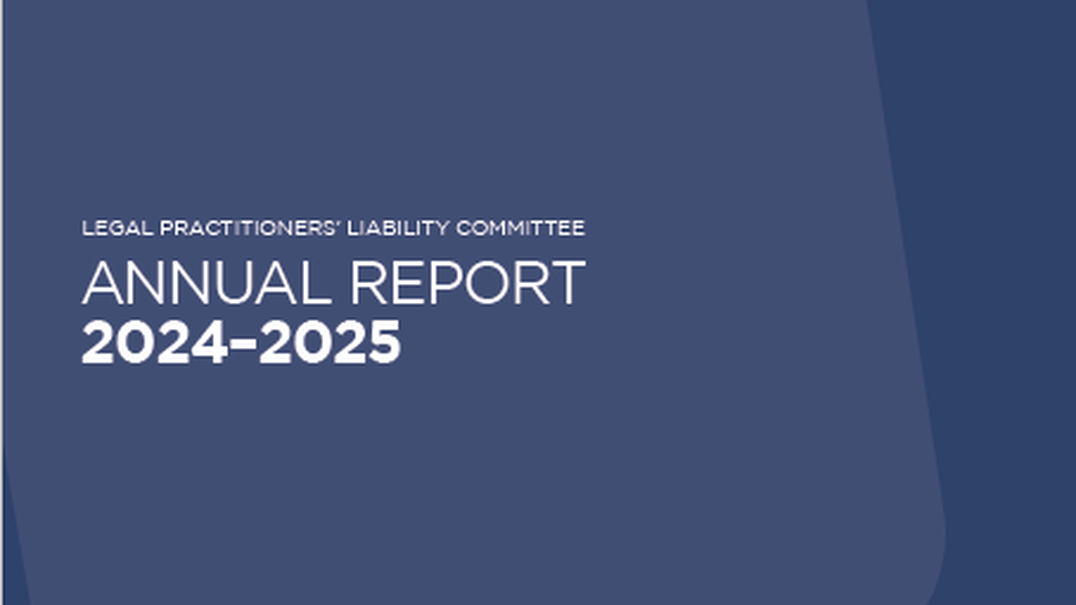Creating a file note following every client contact is a habit that every lawyer, particularly early career lawyers, should focus on as a fundamental skill that will stand them in good stead throughout their working lives. Lawyers who have developed this habit do it routinely as part of their work practice. Creating file notes is good risk management, increases file handling efficiency and is critical to avoid, resolve or defend a disputed issue raised by clients.
Another task that should be equally habitual is confirming legal advice in writing. Research consistently shows that clients rarely retain all of the verbal information provided during a professional consultation, and if the client only takes in some of the advice, there is a risk of things going wrong for both the client and the practitioner. Legal advice is often too complex and voluminous to rely on memory alone and setting it out in clear written form is an effective way to record and communicate all the issues that have been discussed.
Here are five circumstances in particular where follow-up advice letters are essential.
1. Key advice that should always be given in particular types of matters.
In each type of work there is usually important information that should always be raised with the client. While this is often done in an interview, a comprehensive advice letter ensures that all important information for this type of work is covered. Advice letters re-enforce the message to the client and ensure that necessary issues are not missed. Comprehensive pro forma advice letters that cover all anticipated risks, modified for the specific situation, can be an efficient way to generate this correspondence.
2. Focus on a specific risk
In most legal work there arises common situations that require the giving of important specific advice. The clients are required to acknowledge they have received and understood the advice before the matter proceeds. In these situations, the practitioner should set out the issue, risk, and consequences in writing so the client can make an informed decision. For example, the personal liability risk for the executor of a deceased estate who instructs a practitioner to distribute the estate within the statutory six months claims period.
In these situations, it is good practice to provide written advice detailing these risks and any consequences that may follow to the client. Developing proforma letters dealing with common risks and consequences, amended for the specific situation, can be an efficient way to focus the client on a specific risk situation and give good quality advice to the client before they proceed.
3. A reluctant client.
If the client is reluctant to accept your advice, doesn’t appear to fully comprehend the risk, or is acting unwisely, then the practitioner should provide the advice in writing for the client’s consideration and the confirmation of instructions. Setting out the risk issue, advice, and potential consequences helps the client to focus on the specific matter requiring consideration. The use of the written format is also an effective way of helping the client see the issue from a different perspective. When combined with other visual aids such as lists, text highlights, and graphics, the follow-up advice letter becomes a powerful tool for aiding comprehension and making an informed decision.
4. ‘Red Flag’ situations
There are situations where an experienced lawyer can see risks and pitfalls that an inexperienced client can’t. That is one of the main reasons they seek legal advice. Commonly called ‘Red Flag’ situations, they often involve high risk and/or the potential for severe consequences. In this situation the written advice letter can be a circuit breaker requiring the client to step back, and consider the risk that they hadn’t anticipated, resulting in a better or at least a more informed decision. In terms of managing the risk to the lawyer, a practitioner also needs to demonstrate that the client has been given an opportunity to fully appreciate the issues and the consequences of their decision. Creating an environment for the client to ‘stop and reflect’ on a situation is an important part of the risk management process.
5. Emotionally charged situations
Clients often consult with a lawyer in highly emotional situations such as a family breakdown, business failure, litigation, or death of a loved one. In these situations, emotions can impede the client’s ability to take in advice and make rational choices. A good written advice letter helps to give the client space, away from the lawyer’s office or a stressful meeting, to go over the advice in their own time and hopefully, with a clear mind, make an informed decision.
In all these scenarios, written communication supports both client understanding and effective risk management. By confirming advice in writing, lawyers provide clarity, encourage informed decision-making, and create a clear record of the advice given. This is especially important if outcomes are challenged later. A timely advice letter reinforces the lawyer’s role as a trusted advisor and protects both the client and practitioner. Embedding this practice into your routine is not just good client service, it’s a cornerstone of professional, ethical legal practice.

